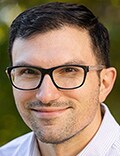Canadian Physicians' Work Hours Have Declined Since 1987
Physicians in Canada, particularly men, are working fewer hours than they did more than three decades ago. The workweek has decreased by 13.5% from 52.7 hours in 1988 to 45.6 hours in 2019, according to a new study.
Paying attention to the ongoing changes in physician work hours could help governments make appropriate healthcare policy decisions, consider trends in workforce planning, and foster gender equity, the study authors wrote.

"Historically, many have suggested that any declines in work activity were due to the feminization of the physician workforce. However, we were surprised that most of the decline in weekly hours of work was driven by male physicians, more specifically married males," lead author Boris Kralj, PhD, adjunct assistant professor of economics at McMaster University's Centre for Health Economics and Policy Analysis in Hamilton, Ontario, Canada, told Medscape Medical News.
"It's also interesting that similar results have been reported in other jurisdictions with very different healthcare delivery and funding modalities, specifically in the United States and United Kingdom," he said. "It suggests that these trends are independent of financial or funding structures."
The study was published online on March 25 in CMAJ.
Gender Gap Decreased
The investigators analyzed data from Statistics Canada's Labour Force Survey to understand long-term trends in physician work hours between 1987 and 2021.
During this time, the proportion of female physicians doubled, and the proportion of self-employed and incorporated physicians tripled. In addition, the proportions of married physicians and physicians with children aged 5 years or younger declined.
Overall, physicians worked more hours per week than the general population: About 20% more hours per week in 2021. At the same time, physician hours dropped by 6.9 from 52.8 hours per week in 1987-1991 to 45.9 hours per week in 2017-2021.
The average hours worked by men dropped significantly beginning in 1997, whereas the hours among women remained relatively stable at around 45 per week. Men accounted for 5.7 of the 6.9-hour decline since 1987, decreasing the weekly hour gap between genders from about 10 in the mid-1990s to about 4 in 2019.
The hours worked by married physicians declined significantly by about 7.4 per week, while the hours worked by unmarried physicians declined by 2.2 per week.
The hours worked varied by province, although interprovince differences declined over time. However, there were no differences in declines based on urban vs rural settings, incorporated vs unincorporated physicians, ages above or below 45 years, or those with or without children aged 5 years or younger.
Pandemic Effects
At the beginning of the COVID-19 pandemic, hours dropped notably, with an 11% decline among men and a 20% decline among women during the second quarter of 2020. By the end of the year, hours returned to pre-pandemic levels.
"During the onset of the COVID pandemic, as in many other sectors, the decline in hours worked by females was much more pronounced than it was for males. However, the recovery to pre-pandemic levels of work was also dramatic," Kralj said. "The impact of COVID was large but temporary, and there is no evidence of any ongoing or permanent impact on the work activity of physicians."
Kralj and colleagues plan to study changes in the structure of physician households over time, including labor force participation and activity levels among spouses, the number of children, and retirement ages.
The shift in work hours may be linked with a desire for better work-life balance, Kralj said, particularly with recent concerns about physician burnout and patient outcomes. The authors also suggested that policymakers consider physician work hour trends and support increasing the size of the medical workforce to anticipate potential future reductions.
Avoiding Burnout
Commenting on the study for Medscape Medical News, David Rudoler, PhD, associate professor of health sciences at Ontario Tech University in Oshawa, Ontario, Canada, said, "This study provides further evidence that focusing merely on per capita supply is insufficient for understanding healthcare service capacity. It underscores the necessity for human resource planners to incorporate provider practice patterns into their decision-making processes."

Rudoler, who wasn't involved with this study, has researched physician practice volume and continuity, particularly among family physicians in Canada. He and his colleagues found declines in volume and patient contacts, indicating a need for more physicians to accommodate patient access.
"In my view, the authors rightly argue that more physicians will be needed to compensate for declining work hours," he said. "But this alone may not be sufficient to address a myriad of trends affecting healthcare system capacity, including, but not limited to, an aging and increasingly medically complex patient population, geographic maldistribution of providers, and changing workforce demographics."
Additional studies are needed to uncover the factors contributing to declining work hours and changing practice patterns, said Rudoler. The results will help determine where policy efforts should be focused.
"We also need to better understand how different care delivery models, such as team-based and virtual care approaches, can improve access to services," he said. "Lastly, I would argue that we need to better understand the practice and work preferences of healthcare providers and what delivery models would allow them to practice at their full scope without causing burnout."
The authors received no financial support for the research. Kralj and Rudoler reported no relevant financial relationships.
Carolyn Crist is a health and medical journalist who reports on the latest studies for Medscape Medical News, MDedge, and WebMD.


 Admin_Adham
Admin_Adham


